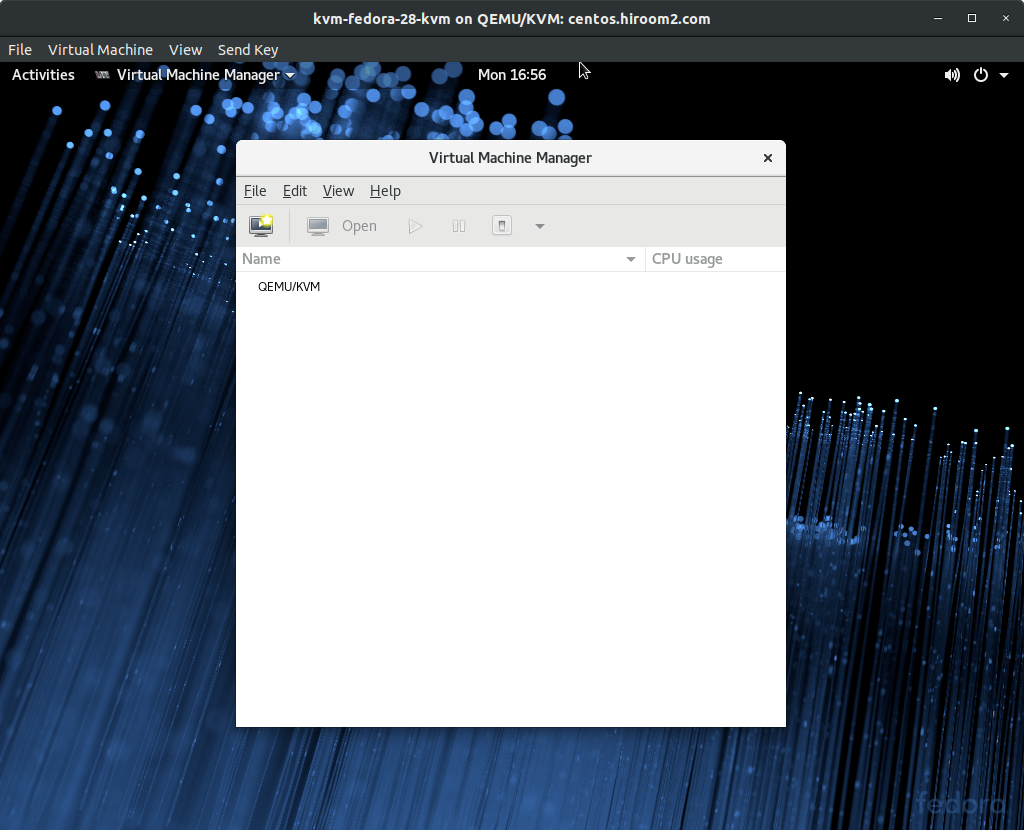This article will describe installing KVM.
Table of Contents
1 Install qemu-kvm and libvirt
Install qemu-kvm package and some packages for virtual machine operation.
$ sudo dnf install -y qemu-kvm virt-manager virt-install
The user in libvirt group can run virt-manager without sudo.
$ sudo gpasswd -a "${USER}" libvirt
2 VNC port
Allow VNC port with using vnc-server.xml so that other machine can access virtual machine.
$ sudo cat /usr/lib/firewalld/services/vnc-server.xml <?xml version="1.0" encoding="utf-8"?> <service> <short>Virtual Network Computing Server (VNC)</short> <description>A VNC server provides an external accessible X session. Enable this option if you plan to provide a VNC server with direct access. The access will be possible for displays :0 to :3. If you plan to provide access with SSH, do not open this option and use the via option of the VNC viewer.</description> <port protocol="tcp" port="5900-5903"/> </service>
Allow VNC port.
$ sudo firewall-cmd --add-service=vnc-server --permanent $ sudo firewall-cmd --reload
3 Enable kvm_intel nested
If Enable kvm_intel nested, you can create nested virtual machine on virtual machine.
$ echo "options kvm_intel nested=1" | \ sudo tee /etc/modprobe.d/qemu-system-x86.conf $ sudo reboot
4 Run virt-manager
You can manage virtual machines via GUI with virt-manager. For managing virtual machines via CUI, use virsh and virt-install.
$ virt-manager
